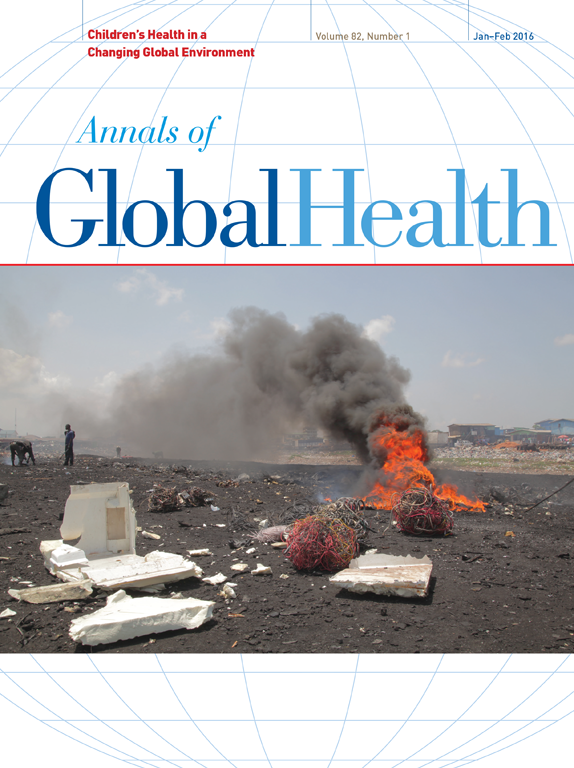Potential Exposure to Arsenic from Infant Rice Cereal
DOI:
https://doi.org/10.1016/j.aogh.2016.01.020Keywords:
arsenic, environmental exposure, infant formula, rice cerealAbstract
BackgroundRice is known to be high in arsenic, including in infant rice cereal. Although arsenic in drinking water is currently regulated, there are currently no US regulations regarding arsenic concentrations in food.
ObjectiveWe used published values to estimate arsenic exposure via rice cereal relative to breast milkor formula for 6- to 12-month-old infants in the general US population.
ResultsWe found that arsenic exposure from 3 servings of rice cereal exceeded that of formula made with water containing arsenic at 10 μg/L, the US Environmental Protection Agency maximum contaminant level.
ConclusionsOur findings suggest that rice cereal can markedly increase arsenic exposure among US infants relative to breast milk and formula.
Downloads
Published
Issue
Section
License
Copyright (c) 2016 The Author(s)

This work is licensed under a Creative Commons Attribution 4.0 International License.
Authors who publish with this journal agree to the following terms. If a submission is rejected or withdrawn prior to publication, all rights return to the author(s):
- Authors retain copyright and grant the journal right of first publication with the work simultaneously licensed under a Creative Commons Attribution License that allows others to share the work with an acknowledgement of the work's authorship and initial publication in this journal.
- Authors are able to enter into separate, additional contractual arrangements for the non-exclusive distribution of the journal's published version of the work (e.g., post it to an institutional repository or publish it in a book), with an acknowledgement of its initial publication in this journal.
- Authors are permitted and encouraged to post their work online (e.g., in institutional repositories or on their website) prior to and during the submission process, as it can lead to productive exchanges, as well as earlier and greater citation of published work (See The Effect of Open Access).
Submitting to the journal implicitly confirms that all named authors and rights holders have agreed to the above terms of publication. It is the submitting author's responsibility to ensure all authors and relevant institutional bodies have given their agreement at the point of submission.
Note: some institutions require authors to seek written approval in relation to the terms of publication. Should this be required, authors can request a separate licence agreement document from the editorial team (e.g. authors who are Crown employees).

